“Our most sophisticated internal PSU design with a far more complexed front end gain stage, has over 50% less signal distortion than the already reference MasterGroove model. This provides the greatest dynamic range of any phono stage in the World by an incredible margin. The very ethos of this is the resolution of more detail than was ever thought possible from any HiFi medium. A set of measurements so in advance of the competition that it will be more akin to testing an advanced Alien technology than measuring a mere electronic device.”
I don't think ChatGPT is that limited. Take the inclusion "has over 50% less signal distortion". If we consider that "the already reference MasterGroove model" has lets say .005% distortion for the sake of argument, then 50% less distortion makes it .0025% distortion. Hence for distortions already at-86dB, this extends to -92dB, seeming leading to their conclusion "This provides the greatest dynamic range of any phono stage in the World by an incredible margin". This suggests that 6dB reduction in distortion is responsible for "the greatest dynamic range of any phono stage in the World by an incredible margin". The use of the word Incredible seems misused as being credible. What adjectives remain for TEAD to use to express the improvement of 16bit to 24bit digital that increases dynamic range by perhaps 48dB. What about 32bit digital. Would this get extended to the super duper incredible^2 margin?
On another note... for TEAD to find and replace one faulty tantalum cap... to bring it back to "as new" (sonically?)... is it reasonable for TEAD to charge the customer what seems another perhaps £2,000 to £6,000 over and above the £25,000 price they already spent? Doesn't TEAD have any thermal detection devices?... perhaps to find problems quickly? Can't they narrow it down to one board and replace that... don't they have diagrams to speed up the process?
For £2,000 you can have an engine replaced for less money (not to be confused with replacing your wife). Does TEAD have an "hourly" rate of repair, or are repair costs as seemingly fictional as the original cost of their products? How do you create a cost estimate in absence of referencing that to some form of hourly rate? As an aside... is an hourly rate of repair posted?
This doesn't really make any sense. Possibly created by ChatGPT?
I don't think ChatGPT is that limited. Take the inclusion "has over 50% less signal distortion". If we consider that "the already reference MasterGroove model" has lets say .005% distortion for the sake of argument, then 50% less distortion makes it .0025% distortion. Hence for distortions already at-86dB, this extends to -92dB, seeming leading to their conclusion "This provides the greatest dynamic range of any phono stage in the World by an incredible margin". This suggests that 6dB reduction in distortion is responsible for "the greatest dynamic range of any phono stage in the World by an incredible margin". The use of the word Incredible seems misused as being credible. What adjectives remain for TEAD to use to express the improvement of 16bit to 24bit digital that increases dynamic range by perhaps 48dB. What about 32bit digital. Would this get extended to the super duper incredible^2 margin?
On another note... for TEAD to find and replace one faulty tantalum cap... to bring it back to "as new" (sonically?)... is it reasonable for TEAD to charge the customer what seems another perhaps £2,000 to £6,000 over and above the £25,000 price they already spent? Doesn't TEAD have any thermal detection devices?... perhaps to find problems quickly? Can't they narrow it down to one board and replace that... don't they have diagrams to speed up the process?
For £2,000 you can have an engine replaced for less money (not to be confused with replacing your wife). Does TEAD have an "hourly" rate of repair, or are repair costs as seemingly fictional as the original cost of their products? How do you create a cost estimate in absence of referencing that to some form of hourly rate? As an aside... is an hourly rate of repair posted?
Based on what I could see, there was a lot of prior art there. I didn’t see much original design at all. Doesn’t UK law take that into account? To me it looked like opamp 101. Mark’s drawings can found in any basic textbook on amplifiers.
IP varies from country to country, and it's nice to learn about the differences. What I am not fully convinced is that by making a reverse engineering and showing off the schematics he draw himself can be considered as stealing IP.In UK Law anything that you make is your intellectual property.
To be fully protected, the only international way (on serious countries) is claiming a patent. Otherwise, I think we both agree that is up to the Judge. 🙂
See... Music, movies, art... has copyright. Software has copyrights or distribution licenses.
Products have... patents to protect it from not been copied. The cost of the patent is nothing compared to an annually revenue of 250K pounds, it would be my choice if I made such a product.
I know a cable manufacturer that make some expensive cables that is not afraid of reverse engineering, because he states that the difference is on the manufacturing process and raw material treatment, things that reverse engineering can't copy. (I'm not stating that they are actually better than his competitors, just putting as an example).
I don't think the people who run around yelling "But he's stealing!" fully understand the schematics that were displayed in the video. If I remember correctly (I'll have to rewatch the video and fact check myself later), there were three diagrams displayed in the video:
All three are squarely in the public domain. Literally everyone who's even thought about designing an amplifier are familiar with this. This is like saying that someone stole the design of a 2by4 piece of wood.
- A standard linear power supply
- A non-inverting (?) opamp-based amplifier stage
- An opamp-based summing amplifier
All three are squarely in the public domain. Literally everyone who's even thought about designing an amplifier are familiar with this. This is like saying that someone stole the design of a 2by4 piece of wood.
also @doug01nBased on what I could see, there was a lot of prior art there. I didn’t see much original design at all. Doesn’t UK law take that into account? To me it looked like opamp 101. Mark’s drawings can found in any basic textbook on amplifiers.
The printed circuit drawings that Mark showed in the OEM looking "Tom Evans Service manual" that Mark created were created from reverse engineering Tom Evans Mastergroove. It doesn't matter if it contains a simple circuit in a section or not the whole item is the IP of Tom Evans. Most electronic items contain basic common items which are found everywhere, but its the combination of those items in a particular order that makes it unique...especially when certain components use different values, which is why TE sanded those ID marks off...
What is more important is that Mark did not have to create that fancy printed "service manual" & show the drawing to the world, as that was not required to carry out the fix to the Mastergroove. If he had left that section of the video out & just left in the section where he hand draws a bit of one circuit he would be ok legally. But he has given TE a legal "toe in" due to his actions!
P.S. Mark has not "stolen" the IP..unless he decides to either sell the plans/drawing or make the items & sell it......However, what he has done is show the secrets of the IP of the item itself.
And that's why he need to patent it, to protect this uniqueness.but its the combination of those items in a particular order that makes it unique...especially when certain components use different values, which is why TE sanded those ID marks off...
He wants views and sell his courses. Of course he need to make his own fancy printed SM, even if this gives entrance to a copyright, lawsuit or whatever. I barely know this guy before this whole thing, and now this is popping up in every group / forum / influencer, as the KZ scandal.Mark did not have to create that fancy printed "service manual" & show the drawing to the world,
Even am I, that's why I don't writing here that A or B are right or wrong... Just looking to learn more.I'm not an expert at UK IP law, but I doubt you can enforce (you can CLAIM, but can you enforce?) copyright on something that's in the public domain. Again, what he displayed were well-known design elements that electrical engineers can draw in their sleep.
Can a full circuit draw be patented? I mean with a full description of every component and layout?
also @doug01nIf I remember correctly (I'll have to rewatch the video and fact check myself later), there were three diagrams displayed in the video:
Here are the screenshots from the video where Mark shows his computer drawings. Some are close-ups of the bigger drawings. These are not required to show him fixing the item. Like I say he would have been better off legally not showing this section. Any decent Solicitor/Barrister acting for TE would be able to make a case...but it would be upto the Judge to decide if its valid.....
Personally it would be better if Mark had not published this small section of the video (as shown in the screenshots below) & cut it out its not 100% needed to show the actual fix....don't leave yourself open to legal comeback.
But thats my take on things having studied aspects of UK commercial contract law (& other UK Law aspects involving design "property") & also having been directly involved in court cases involving commercial contracts etc...
P.S.:- TE throwing a strop at Youtube & Youtube taking TE's side first was totally unwarranted from Youtube.
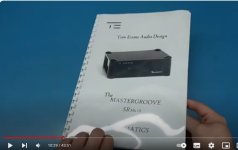
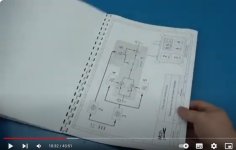
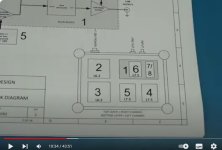
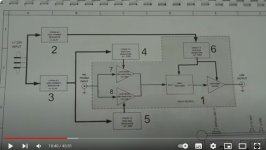
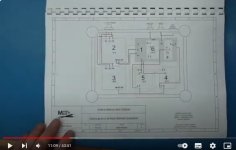
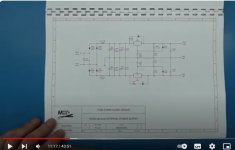
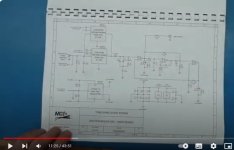
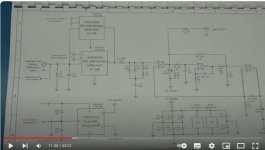
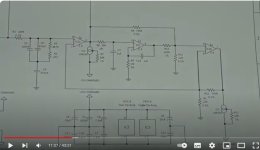
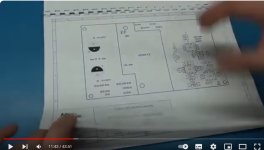
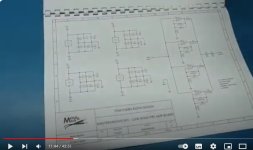
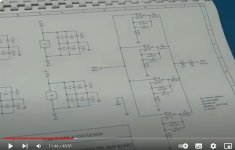
@doug01n You can patent pretty much any circuit. HOWEVER, you need to prove that it's not covered by what's known as "prior art", e.g. your invention or at least significant parts of it, cannot be previously published or otherwise well-known to the public. So if you try to patent something that's already covered in textbooks, your claim will be rejected.
Now, this is a discussion about copyright and not patents, but I do believe you'd have an uphill battle on enforcing copyright on something that you can find in any textbook. Anyone can make the claim, but the trick is to enforce it.
Now, this is a discussion about copyright and not patents, but I do believe you'd have an uphill battle on enforcing copyright on something that you can find in any textbook. Anyone can make the claim, but the trick is to enforce it.
Thanks for all your time, Dave! That's very clarifying and really worth the clean discussion about this subject!also @doug01n
also @doug01n
Here are the screenshots from the video where Mark shows his computer drawings. Some are close-ups of the bigger drawings. These are not required to show him fixing the item. Like I say he would have been better off legally not showing this section. Any decent Solicitor/Barrister acting for TE would be able to make a case...but it would be upto the Judge to decide if its valid.....
Personally it would be better if Mark had not published this small section of the video (as shown in the screenshots below) & cut it out its not 100% needed to show the actual fix....don't leave yourself open to legal comeback.
But thats my take on things having studied aspects of UK commercial contract law (& other UK Law aspects involving design "property") & also having been directly involved in court cases involving commercial contracts etc...
P.S.:- TE throwing a strop at Youtube & Youtube taking TE's side first was totally unwarranted from Youtube.
Whether the "Repair Manual" was in good taste or not is another question. But I maintain that he's going to have an uphill battle enforcing copyright on any of that. The block diagrams don't give away enough details to be useful to steal the design and the detailed circuit diagrams just depict very basic and standard building blocks that are all over the public domain. Either way, I doubt suing a mild mannered English repairman will cover the cost in terms of money and lost goodwill. If I were him, I would just move on.
That's also my understanding regarding patents. I'm deep into the pharma industries, and without patents, the reverse engineering of an innovative medicine is a matter of months to be copied by other companies, regardless of how secret your formulation is.@doug01n You can patent pretty much any circuit. HOWEVER, you need to prove that it's not covered by what's known as "prior art", e.g. your invention or at least significant parts of it, cannot be previously published or otherwise well-known to the public. So if you try to patent something that's already covered in textbooks, your claim will be rejected.
Now, this is a discussion about copyright and not patents, but I do believe you'd have an uphill battle on enforcing copyright on something that you can find in any textbook. Anyone can make the claim, but the trick is to enforce it.
@njswede Again here in the UK its not necessarily "copyright"...the term that can be used here in the UK is "intellectual property"....which is anything that an individual has created. The most extreme is a piece of "artwork" which was simply a banana stuck to a wall with a piece of gaffer tape....that is the IP of the artist, yet it comprises two everyday common items, which are almost impossible to patent/trademark.
The fact that TE sanded off the ID marks from components means that TE has taken steps to protect his intellectual property, even if he hasn't patented it. In this case its IP as lets say he's using a standard circuit design but with "not normal values for some components" so cannot patent the whole circuit.
As I have said before TE is probably scared that others could replicate his £25k item & sell a decent knock-off all due to the information that Mark has put out in those drawings I screenshot above (you would be able to get cleaner shots) .
I'll repeat, its upto a Judge to make a decision, & whether its a non starter is another matter. Many USA & Western & Jap companies waste millions on legal teams trying to fight China copies of their products....In many cases its a lost battle with China, but if you don't do anything & sit back, then its "open warfare" & you will loose.
On a final note, whilst I commend the way Mark does things, I think legally he slipped up on that small section of the video. I also think YouTube's action's were totally knee-jerk & unwarranted. If TE was "open" in the way that a similar small one man band UK company of Avondale Audio go about things, then TE wouldn't need to be so worried about anything being "revealed"!....
The fact that TE sanded off the ID marks from components means that TE has taken steps to protect his intellectual property, even if he hasn't patented it. In this case its IP as lets say he's using a standard circuit design but with "not normal values for some components" so cannot patent the whole circuit.
As I have said before TE is probably scared that others could replicate his £25k item & sell a decent knock-off all due to the information that Mark has put out in those drawings I screenshot above (you would be able to get cleaner shots) .
I'll repeat, its upto a Judge to make a decision, & whether its a non starter is another matter. Many USA & Western & Jap companies waste millions on legal teams trying to fight China copies of their products....In many cases its a lost battle with China, but if you don't do anything & sit back, then its "open warfare" & you will loose.
On a final note, whilst I commend the way Mark does things, I think legally he slipped up on that small section of the video. I also think YouTube's action's were totally knee-jerk & unwarranted. If TE was "open" in the way that a similar small one man band UK company of Avondale Audio go about things, then TE wouldn't need to be so worried about anything being "revealed"!....
I believe to patent something there needs to be an 'inventive step'.
And something that is not previously in the public domain.
It can be a fine line, and sometimes combining two existing technologies in a new way can give that.
I personally don't think the TE design has that inventive step.
He might have even filed for a patent and been refused.
Also patents cost.
Patenting something worldwide costs more. Are you sure you'll sell enough?
Take out a Patent for say Europe and USA and someone in China can make it and sell it there and be scot free - patents are territorial.
Something sold on AliExpress may contain patented tech and it leaks in, lot of hassle to buy every competitors unit and analyse, have they infringed my patent. Let alone go after the originator.
Maintaining a patent for years costs more still.
That's why most patents lapse.
Once published, a patent contains lots of detail so others who would make and sell know what they would be infringing.
They would also know what to avoid doing that would be an infringenent. Ignorance is no defence.
You have to pay settlement fees etc.
Tech companies even patent tech that they even have no interest in implementing.
That way they can make money licensing or trade patents for other ones they want.
Happened all the time in my world, Ericsson / Nokia / Motorola etc
Much less likely to happen at TE's level of business.
And something that is not previously in the public domain.
It can be a fine line, and sometimes combining two existing technologies in a new way can give that.
I personally don't think the TE design has that inventive step.
He might have even filed for a patent and been refused.
Also patents cost.
Patenting something worldwide costs more. Are you sure you'll sell enough?
Take out a Patent for say Europe and USA and someone in China can make it and sell it there and be scot free - patents are territorial.
Something sold on AliExpress may contain patented tech and it leaks in, lot of hassle to buy every competitors unit and analyse, have they infringed my patent. Let alone go after the originator.
Maintaining a patent for years costs more still.
That's why most patents lapse.
Once published, a patent contains lots of detail so others who would make and sell know what they would be infringing.
They would also know what to avoid doing that would be an infringenent. Ignorance is no defence.
You have to pay settlement fees etc.
Tech companies even patent tech that they even have no interest in implementing.
That way they can make money licensing or trade patents for other ones they want.
Happened all the time in my world, Ericsson / Nokia / Motorola etc
Much less likely to happen at TE's level of business.
There is so much misinformation here by well meaning people.
- Patent: You need first to have the government issue you the patent and then you can assert it. No relevant here, no patent, no patent number. As many have said this circuit probably can't even qualilfy for a patent since its been done forever (but in any event that is not relevant since there is no patent).
- Trademark: only a problem if you confuse people about the origin of the product/service. Not relevant here, its not said that the repair guy is holding himself out as TE.
- Copyright: Protects the expression of the idea, not the idea itself. But the thing is you have to actually copy it to have a problem. Here the repair guy just reverse-engineered the circuit, no copyright issue at all even if he published it. He arrived at the idea itself (the circuit) not the expression of the idea that TE used (say the pcb layout- which he did not copy). This is also why the DIY Krell Clone we made here is legitimate- no one copied the PCB, we made our own. So all those diagrams and circuits in his "manual" are not a problem at all.
- Trade Secret: is only protectable if you keep it secret and take steps to maintain it secret; and not protectable at all if the trade secret is reverse engineered. Not relevant here as the entire thing was reverse engineered EXCEPT for the secret part (the defaced semiconductors). Even so you could just decap the semis and you would have it all and trade secret would not prevent you from doing what you want. Trade secret would only work if the repair guy had a signed non disclosure agreement with TE.
- In the UK you have unregistered designs and registered designs. These protect the look of the product or artistic things like logos, patterns, etc.. Not relevant here for same reason as Trademark. And, the design was not copied.
So the only possible issue that I can see, and the one mentioned by the repair guy, is that he showed some parts of the TE website- probably subject to copyright, which were "copied" into the video. But even so, it was a small portion of the web site and most likely fair use since the entire point of a website is that you authorize visitors to view it and you want others to view it.
- Patent: You need first to have the government issue you the patent and then you can assert it. No relevant here, no patent, no patent number. As many have said this circuit probably can't even qualilfy for a patent since its been done forever (but in any event that is not relevant since there is no patent).
- Trademark: only a problem if you confuse people about the origin of the product/service. Not relevant here, its not said that the repair guy is holding himself out as TE.
- Copyright: Protects the expression of the idea, not the idea itself. But the thing is you have to actually copy it to have a problem. Here the repair guy just reverse-engineered the circuit, no copyright issue at all even if he published it. He arrived at the idea itself (the circuit) not the expression of the idea that TE used (say the pcb layout- which he did not copy). This is also why the DIY Krell Clone we made here is legitimate- no one copied the PCB, we made our own. So all those diagrams and circuits in his "manual" are not a problem at all.
- Trade Secret: is only protectable if you keep it secret and take steps to maintain it secret; and not protectable at all if the trade secret is reverse engineered. Not relevant here as the entire thing was reverse engineered EXCEPT for the secret part (the defaced semiconductors). Even so you could just decap the semis and you would have it all and trade secret would not prevent you from doing what you want. Trade secret would only work if the repair guy had a signed non disclosure agreement with TE.
- In the UK you have unregistered designs and registered designs. These protect the look of the product or artistic things like logos, patterns, etc.. Not relevant here for same reason as Trademark. And, the design was not copied.
So the only possible issue that I can see, and the one mentioned by the repair guy, is that he showed some parts of the TE website- probably subject to copyright, which were "copied" into the video. But even so, it was a small portion of the web site and most likely fair use since the entire point of a website is that you authorize visitors to view it and you want others to view it.
Last edited:
Thanks for clearing that up, even though I was probably one of the "well meaning people". 😉There is so much misinformation here by well meaning people.
As a musician, at one point created a music publishing company and produced a good number of first editions of 18th-century orchestral music -- making them available for sale. A large number of libraries purchased them and a few private parties. Most of the private party sales were to shady individuals who recopied them and made them available for free to students and performers world wide.
This kind of piracy is well-known in the music industry and I was informed at that time that there was no recourse. You could prove copyright infringement but the recovery amounts were so small that legal fees would not be covered.
My goal was to popularize forgotten music by past masters so I didn't care. Either way, some of this music got performed and recognized.
But if you are trying to make a living in the audio world, you do care -- probably a great deal. So many of the options have been investigated by the fine minds above and they often come to the same conclusion I did: legal action is just not worth the bother.
Reiterate a point made above (and seconded by @njswede). It's time to move on for both parties. Mend It Mark is much better known/respected and many (including myself) have visited the Tom Evans Audio Design website for the first time.
Everyone wins, right?
This kind of piracy is well-known in the music industry and I was informed at that time that there was no recourse. You could prove copyright infringement but the recovery amounts were so small that legal fees would not be covered.
My goal was to popularize forgotten music by past masters so I didn't care. Either way, some of this music got performed and recognized.
But if you are trying to make a living in the audio world, you do care -- probably a great deal. So many of the options have been investigated by the fine minds above and they often come to the same conclusion I did: legal action is just not worth the bother.
Reiterate a point made above (and seconded by @njswede). It's time to move on for both parties. Mend It Mark is much better known/respected and many (including myself) have visited the Tom Evans Audio Design website for the first time.
Everyone wins, right?
@Speedysteve7
You hit it on the head regarding patents etc. & jogged a memory from about 15-20yrs ago when I used to sell & advise on industrial rope access gear & arb gear...
I invented a new type of knot for joining the end of a length of rope into a loop. Now the common way is to take a length of rope & join the ends using a "double barrel" knot. this now "loop" of rope is then used to tie one of several different type of "prussik" knots around a thicker rope. The "Prusik" acts a clamp/grip around the rope for back up and ascending a rope. This is mainly used in Arb (Tree work).
Now when used to climb a rope the constant loading & unloading of the loop causes the karabiner which connects the loop to your harness, to freely rotate which can lead to it being x-loaded, which is dangerous.
I used to cut lengths of rope, tie barrel knots in it, load the knot to 75kgs, put info marks on it & clear heat shrink over & sell them (all legal etc.) as "prusik loops". This many other resellers did, as is saved the users having to spend time doing it, & many didn't have the hot knife rope cutters! But I figured a way to encapsulate the back spine of the loop into the barrel knot, this making two loops which could be adjusted so you have one very small loop to trap the karabiner in & a much larger loop to tie around your rope to form the "Prusik" knot...
I looked into patenting it as it was totally unique & nobody had done this before, & even the distributers of a major rope manufacture couldn't believe it when they saw it & pull tested it!
However, paying out for patenting, & enforcing it, etc, chasing breaches etc...I decided to forget that avenue...
Instead I let the idea "be free"...this had the advantage that nobody else could patent it & earn money solely for themselves. Anyway the big rope brands & several other interest parties decided not to make them by hand as I did as it, as it was too labour intensive to the item which is a cheap disposable. (I made & sold many dozens as a work of love) What it do was force the big rope companies to look into the gear & prusik loops, with them ending up figuring a way to make a similar item using their existing computer stitching sewing machines for "eyes" to make a similar item. My idea forced a good change in product availability!...
Below is a photo of my knot (on krab next to pulley) in a tree climbing rig set-up that I created & sold....Blue rope on left is sewn eye, rope goes to top of tree/anchor point, comes down on right side through prusik knot (clamp/grab), through pulley & down as "dead" rope bottom right. By taking dead rope & pulling upwards it forces rope down through pulley which unlocks the prusik knot, when you release the dead rope the prusik now grabs/locks...Its a simple climbing technique referred to as "Thrutching", or "body thrusting".....yes yes snigger, snigger....!!
P.S. sorry for going "off-topic"
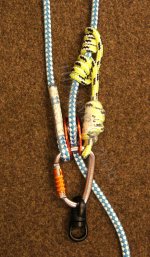
You hit it on the head regarding patents etc. & jogged a memory from about 15-20yrs ago when I used to sell & advise on industrial rope access gear & arb gear...
I invented a new type of knot for joining the end of a length of rope into a loop. Now the common way is to take a length of rope & join the ends using a "double barrel" knot. this now "loop" of rope is then used to tie one of several different type of "prussik" knots around a thicker rope. The "Prusik" acts a clamp/grip around the rope for back up and ascending a rope. This is mainly used in Arb (Tree work).
Now when used to climb a rope the constant loading & unloading of the loop causes the karabiner which connects the loop to your harness, to freely rotate which can lead to it being x-loaded, which is dangerous.
I used to cut lengths of rope, tie barrel knots in it, load the knot to 75kgs, put info marks on it & clear heat shrink over & sell them (all legal etc.) as "prusik loops". This many other resellers did, as is saved the users having to spend time doing it, & many didn't have the hot knife rope cutters! But I figured a way to encapsulate the back spine of the loop into the barrel knot, this making two loops which could be adjusted so you have one very small loop to trap the karabiner in & a much larger loop to tie around your rope to form the "Prusik" knot...
I looked into patenting it as it was totally unique & nobody had done this before, & even the distributers of a major rope manufacture couldn't believe it when they saw it & pull tested it!
However, paying out for patenting, & enforcing it, etc, chasing breaches etc...I decided to forget that avenue...
Instead I let the idea "be free"...this had the advantage that nobody else could patent it & earn money solely for themselves. Anyway the big rope brands & several other interest parties decided not to make them by hand as I did as it, as it was too labour intensive to the item which is a cheap disposable. (I made & sold many dozens as a work of love) What it do was force the big rope companies to look into the gear & prusik loops, with them ending up figuring a way to make a similar item using their existing computer stitching sewing machines for "eyes" to make a similar item. My idea forced a good change in product availability!...
Below is a photo of my knot (on krab next to pulley) in a tree climbing rig set-up that I created & sold....Blue rope on left is sewn eye, rope goes to top of tree/anchor point, comes down on right side through prusik knot (clamp/grab), through pulley & down as "dead" rope bottom right. By taking dead rope & pulling upwards it forces rope down through pulley which unlocks the prusik knot, when you release the dead rope the prusik now grabs/locks...Its a simple climbing technique referred to as "Thrutching", or "body thrusting".....yes yes snigger, snigger....!!
P.S. sorry for going "off-topic"

He can draw whatever he wants and that then becomes his copyright. He can show it to whoever he wants.Here are the screenshots from the video where Mark shows his computer drawings. Some are close-ups of the bigger drawings. These are not required to show him fixing the item. Like I say he would have been better off legally not showing this section. Any decent Solicitor/Barrister acting for TE would be able to make a case...but it would be upto the Judge to decide if its valid.....
Nobody has any recurse because it is fully within his right, he has the copyright to his drawings.
How often do I need to explain?
Jan
- Status
- Not open for further replies.
- Home
- Member Areas
- The Lounge
- The £25,000 preamp that went wrong - Tom Evans Mastergroove